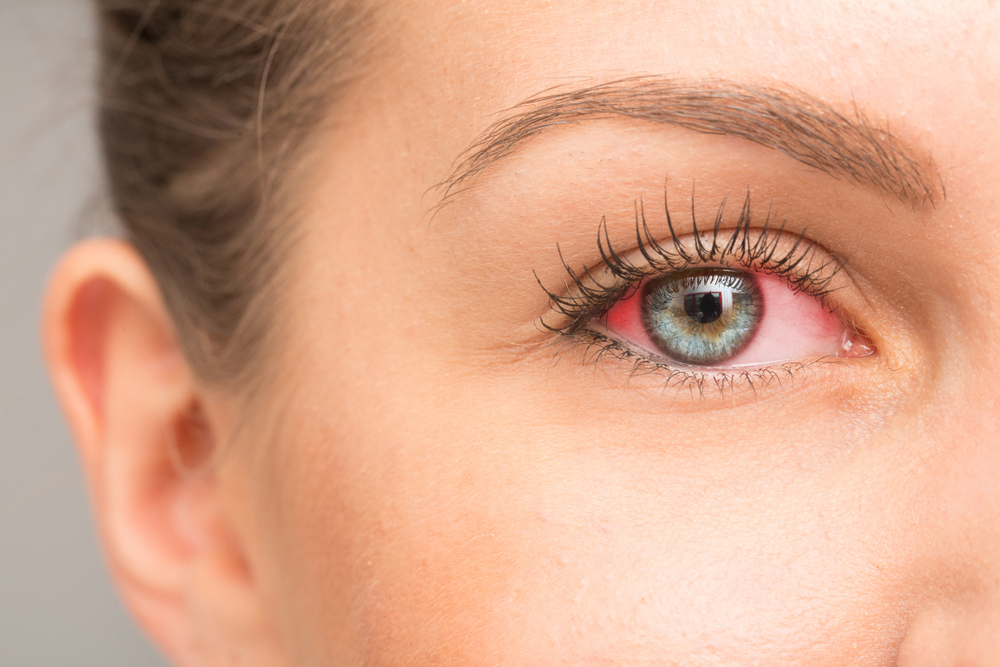Keratitis
Keratitis is the inflammation of the cornea located on the front surface of the eye. The cornea is a dome-shaped layer of transparent tissue that allows light beams to enter the eye. Keratitis can be caused by infections, injuries or other eye diseases. Symptoms of keratitis may include eye redness, pain, and sensitivity to light. Treatment of keratitis may vary depending on the underlying cause. Preventing keratitis involves taking hygienic measures to reduce the risk of infection.
As a result, keratitis is an important disorder for eye health. When symptoms are noticed, consulting an ophthalmologist is important for early diagnosis and treatment. Moreover, if this disease is left untreated, it can lead to more serious disorders such as vision loss. You can read the rest of the article to learn more comprehensive answers to the questions of what is keratitis, its symptoms and treatment.

SUBJECT TITLES
What is Keratitis?
Keratitis is inflammation on the lens surface. This condition can be caused by a variety of reasons, including infections, eye injuries, or exposure of the eyes to excessive light. Symptoms of keratitis can generally be listed as eye redness, eye pain, blurred vision, sensitivity to light and burning in the eye. Left untreated, keratitis can cause vision loss or corneal ulcers. Treatment may vary depending on the underlying causes and severity of symptoms and may include eye drops, antibiotics, or even surgery.
How Does Keratitis Occur?
Keratitis is inflammation of the eye cornea. This may occur due to different reasons. Infections, injuries, or overexposure of the eye can cause keratitis.
Infections can be caused by bacteria or viruses. Bacterial keratitis usually occurs as a result of eye injury or foreign objects entering the eye. The risk of developing infection is especially higher in individuals who use contact lenses. Viral keratitis can occur as a result of viruses such as herpes simplex virus (HSV) or herpes zoster virus (HZV) infecting the eye. Additionally, fungal infections can also cause keratitis.
Keratitis can also occur due to eye injuries. For example, minor scratches, cuts, or foreign objects in the eye can lead to keratitis infection. Additionally, environmental factors such as ultraviolet (UV) rays can also increase the risk of keratitis.
Finally, some medications or contact lenses can also cause keratitis infections. Improper cleaning or use of contact lenses may increase the risk of keratitis. To prevent these infections, a person should clean their contact lenses and follow the instructions for use.
Usually, infections or injuries cause the corneal layer of the eye to weaken and become less resistant to infections. In this case, the cornea becomes inflamed due to infections or injuries and keratitis occurs.
What are the Keratitis Risk Factors?
Keratitis is inflammation of the corneal layer of the eye and there are some risk factors. These factors may include:
- Lenses: While in your eye, contact lenses can cause microbes to grow on the cornea, resulting in keratitis.
- Eye injuries: Eye injuries can cause damage to the cornea.
- Immune system: People with a weak immune system are at higher risk of developing keratitis.
- Dirty environments: Being in dusty or dirty environments can cause microbes to accumulate in the eyes. and this can increase the risk of keratitis.
- Contact lens use: Contact lens use can cause microbes to accumulate in the eyes, which can increase the risk of keratitis.
- Dry eyes: Dry eyes can cause irritation in the eyes.
- Age: Older people are at higher risk of developing keratitis.
- Eye infections: Eye infections can cause damage to the cornea, which can increase the risk of keratitis.
People at risk of developing keratitis can reduce their risk by taking precautions such as using protective glasses or safe contact lenses.
What are the symptoms of keratitis?
Keratitis is inflammation of the corneal layer of the eye and can present with the following symptoms:
- Pain in the eye: People with keratitis may feel severe pain or discomfort in their eyes.
- Watering eyes: Watery eyes are one of the symptoms of keratitis and may be due to irritation caused by inflammation in the eye.
- Eye redness: Keratitis is a condition in the eye. may cause redness.
- Light sensitivity: People with keratitis may be sensitive to light.
- Blurred vision: Since keratitis causes damage to the corneal layer of the eye, blurred vision may also be a symptom.
- Foreign body sensation in the eye: People with keratitis may feel that there is a foreign object in their eye.
- Swelling in the eyelids: Keratitis can cause swelling and pain in the eyelids.
These symptoms may develop within a few hours, or sometimes may occur gradually over a few days. If you are experiencing one or more of these symptoms, it is recommended that you consult an ophthalmologist.
Keratitis Complications
Keratitis is inflammation of the corneal layer of the eye and can lead to serious complications. Below is information about the complications of keratitis:
- Corneal ulcer: Inflammation of the corneal layer can cause ulcer formation. This can lead to vision loss and more serious problems such as blindness.
- Corneal scarring: Due to corneal inflammation, corneal tissue can become damaged and scarred. This condition can cause vision loss.
- Eye infections: Keratitis can cause eye infections. These infections can spread within the eye and cause serious eye damage.
- Cataract: Inflammation of the cornea can lead to the formation of serious eye problems such as cataracts.
- Vision loss: Keratitis, corneal damage or scarring. why could it be. This condition can lead to serious vision loss.
Keratitis is one of the eye diseases that can lead to serious complications. It is important to consult an ophthalmologist, as treatment is possible with early diagnosis.
Keratitis Treatment
Keratitis is a condition caused by infection, injury or inflammation on the corneal surface and can lead to vision loss. Because the cornea can be permanently damaged, it needs to be treated. The treatment method may vary depending on the cause and your ophthalmologist will prepare the best treatment plan for you. Treatment methods can be listed as follows:
- Antibiotics: Keratitis usually occurs due to bacterial infection. Therefore, the use of topical antibiotics is a common method of treating the infection. The duration of antibiotic treatment may vary depending on the type and severity of the infection.
- Antiviral medications: Viral infections such as herpes simplex virus can cause keratitis. In this case, the use of antiviral drugs is recommended.
- Steroids: In inflammatory cases, the use of corticosteroids can help reduce inflammation. However, the use of steroids may be limited depending on the type and severity of the infection.
- Immunosuppressive drugs: In some cases, the activity of the immune system needs to be suppressed. In this case, immunosuppressive drugs can be used.
- Surgery: In some cases, if the cornea is damaged or ulcerated, surgeries such as corneal transplantation may be necessary.
Which method will be used in the treatment of keratitis, the infection will be eliminated. depends on its type and severity. Therefore, when any symptoms are noticed, it is important to contact an ophthalmologist or the nearest health institution for early diagnosis and treatment.
